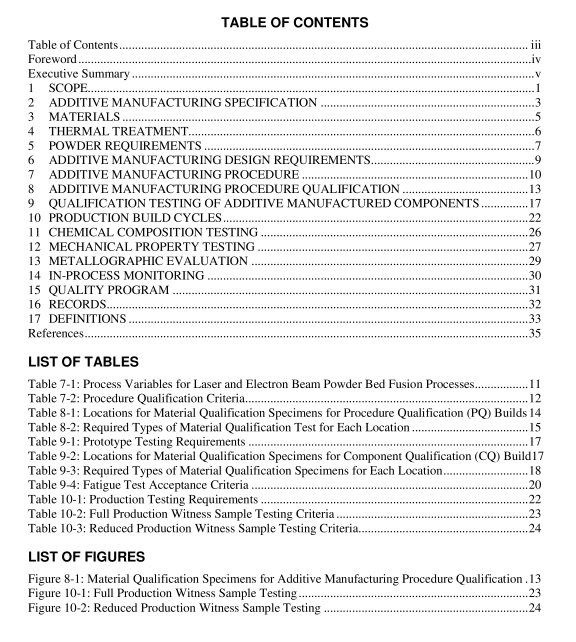ASME PTB-13 pdf download

ASME PTB-13 pdf download Cri teria for Pressu re Retai n in g M etal l i c Com pon en ts U si n g Ad d iti ve M an u factu ri n g
3MATERIALS
(a) For the purpose of these criteria, Material is defined as an additively manufactured component meeting
the requirements of the ASME material specification.
(b) The Additive Manufacturer shall select a listed wrought ASME material specification from ASME
BPVC Section ll for the component material. The selected ASME material specification shall beidentified in the Additive Manufacturing Specification. In the remainder of this document, the selectedmaterial specification is identified as the ASME material specification.
(c) The requirements for chemical composition,grain size (where applicable),hardness,final heat
treatment and mechanical properties shall be identical to the requirements of the ASME materialspecification.
(d) When a material does not meet a wrought material specification in ASME Section ll, the Additive
Manufacturer may request approval of a new material from ASME in accordance with the requirementsof Appendix 5 of ASME BPVC Section II, Part D[1].
(e) All material processing and testing shall meet the requirements of the Additive Manufacturing
Specification and these criteria.
Commentary
The material for the AM component is the additively manufactured component in its final heat-treatedcondition.The Additive Manufacturer shall select a listed wrought ASME material specification fromASME BPVC Section ll for the AM component material. The selected ASME material specification shallbe identified in the Additive Manufacturing Specification.The AM Committee reviewed data generatedby several additive manufacturers and determined that AM component properties are appropriate to meetwrought specifications [2] when the additive manufacturer has achieved control of the AM process throughrigorous qualification testing (see Section 8). Specifying the use of wrought material for AM componentmaterial follows the same direction used for the recent additions to ASME Code for componentsmanufactured using powder metallurgy/hot isostatic pressing technology. The AM material shall meet theASME material specification requirements for chemical composition,grain size, hardness,final heattreatment and mechanical properties. When a material for use in an AM build does not meet a wroughtmaterial specification in ASME Section ll, the Additive Manufacturer may request approval of a newmaterial from ASME in accordance with the requirements of ASME Section ll, Part D, Appendix 5 [1].Asadditive manufacturing becomes more common,the need will exist for new material with thermaltreatments optimized for the powder bed fusion process,and thus, new materials will be needed for Codeapplication.
4THERMAL TREATMENT
(a) The final heat treatment of the AM material shall be that specified in the ASME material specification.(b) Additional intermediate thermal treatment is acceptable. Intermediate thermal treatment may include
stress relief, hot isostatic pressing or other thermal processing.
(c)When intermediate thermal treatment is performed,ASTM F3301 [3] may be used as guidance.(d) When hot isostatic pressing is performed, recognized standards such ASTM A988 [4] or ASTM A1080
[5] may be used as guidance.
(e) All material testing shall be performed on material specimens in the final heat-treated condition of the
ASME material specification.
Commentary
The AM component is required to have the identical final heat treatment requirements applied to the builtcomponent as specified for the ASME material specification. Additional intermediate thermal treatmentsuch as hot isostatic pressing (HIP) is acceptable, but is not required by the criteria.The ASME AM SpecialCommittee reviewed data that compared material properties for material receiving an intermediate HIPthermal treatment to material that had not received a HIP treatment. The data supports applying a HIPthermal treatment to improve the material properties by reducing defects through densification, but is notalways necessary to meet the properties of the material specification.Depending upon the material, as-built microstructure, type and size of defect, HIP does not always improve material properties. The dataalso showed that applying a HIP thermal treatment will not account for a lack of rigorous AM processcontrol prior to starting production builds. The emphasis in these AM criteria is achieving and maintainingprocess control during the AM builds. The criteria provide guidance for specifying the requirement for HIPand other intermediate thermal treatments in Section 4 when these processes are specified in the AMSpecification (Section 2).









